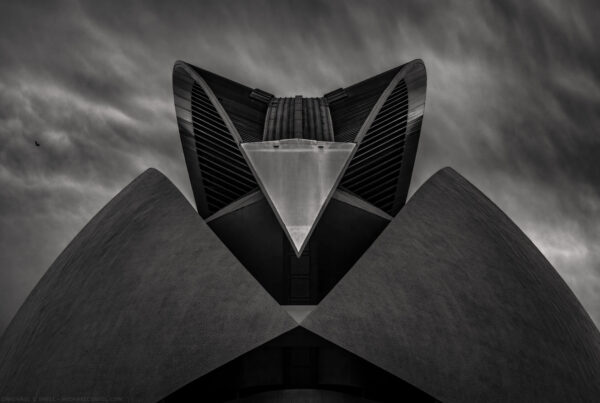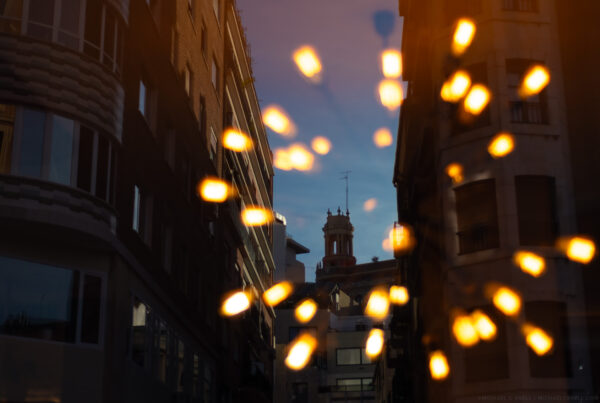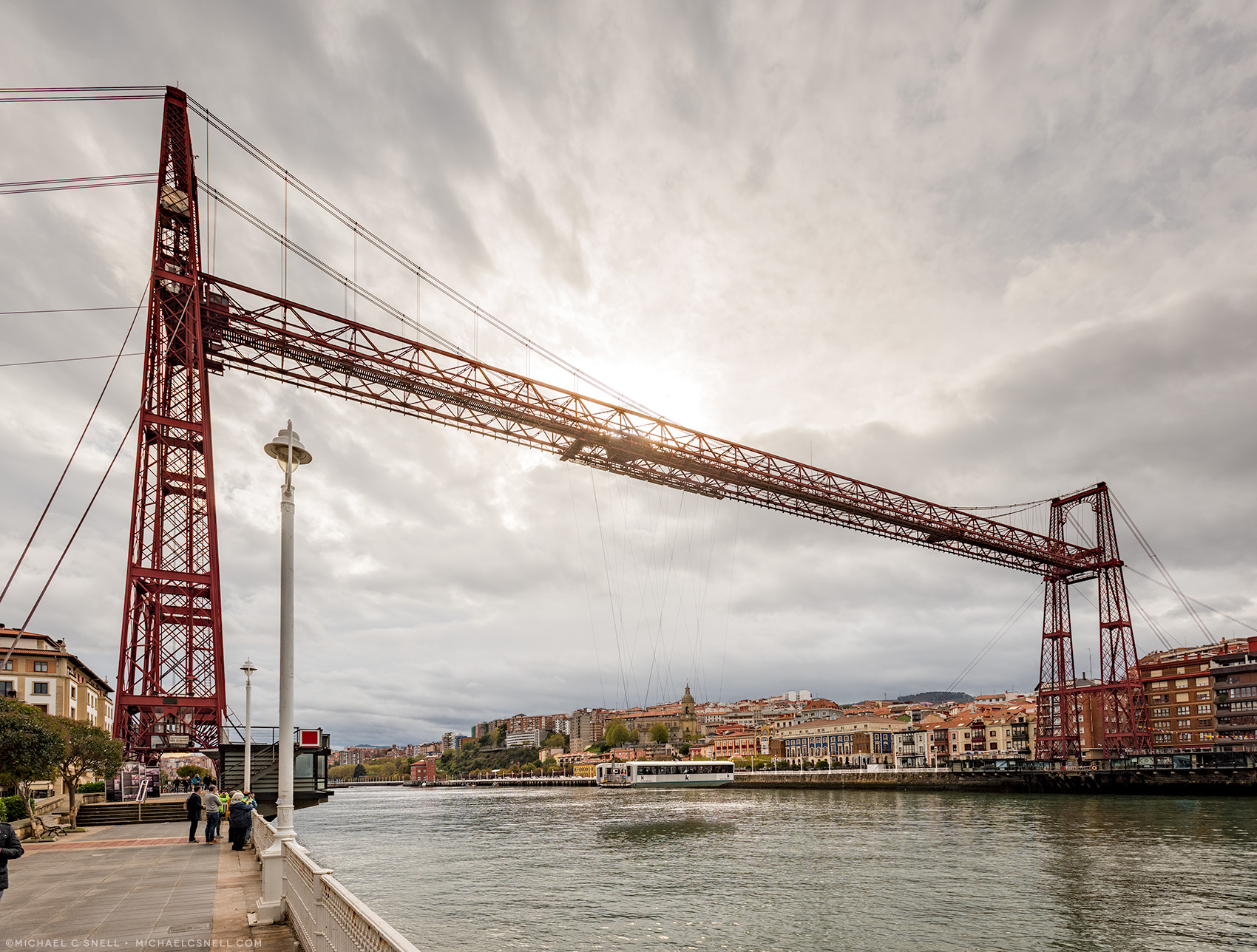
I’ll be first to admit that I’m an odd duck when it comes to bridges. Believe it or not, I worked my way through college as a research assistant writing National Register nominations for historic bridges. It’s still fun for me, decades later, when I’m on the road and run across an unusual bridge. And “unusual” is a pretty apt description for the Viscaya Bridge near Bilbao, Spain, which crosses the Nervión River at its mouth.
Since this has long been a navigable river — and a very important one for all of the industry in Bilbao — the builders needed a way to span the river without blocking ships. If the river banks were higher, you would probably see a traditional, high bridge cross the river here. Or they could have gone with a drawbridge of some sort, but that still blocks the river when it’s not open.
What the engineers decided to build here, in 1893, was a “hanging” bridge. Now a UNESCO site, it is described on their website as follows:
It was designed by the Basque architect, Alberto de Palacio, who devised the first bridge in the world with a hanging transporter – which transports passengers and vehicles by means of a gondola suspended high above the passing ships. Its construction is outstanding for merging 19th-century ironworking traditions, taken from the railways, with the new lightweight technology of twisted steel cables, designed by the Frenchman Ferdinand Arnodin. Constructed on private initiative between 1887 and 1893, the bridge has worked almost without interruption since it was built.
How it works is that it’s a raised suspension bridge. The deck is nearly 150 feet above the water, but it has no approaches and does not directly carry traffic. While you can access the top by elevator and walk across (as I did), cars and other vehicles have no way to getting to the “bridge deck.” Instead, there is a “transporter” hanging from the deck on cables. Cars, motorcycles, and people can drive or walk onto this transporter at street level and it is then taken across the river.
Probably easier to understand by seeing it in action so here are some photos of the transporter being suspended over the water on cables from the gondola that crosses the bridge deck high above on what are essentially train tracks:
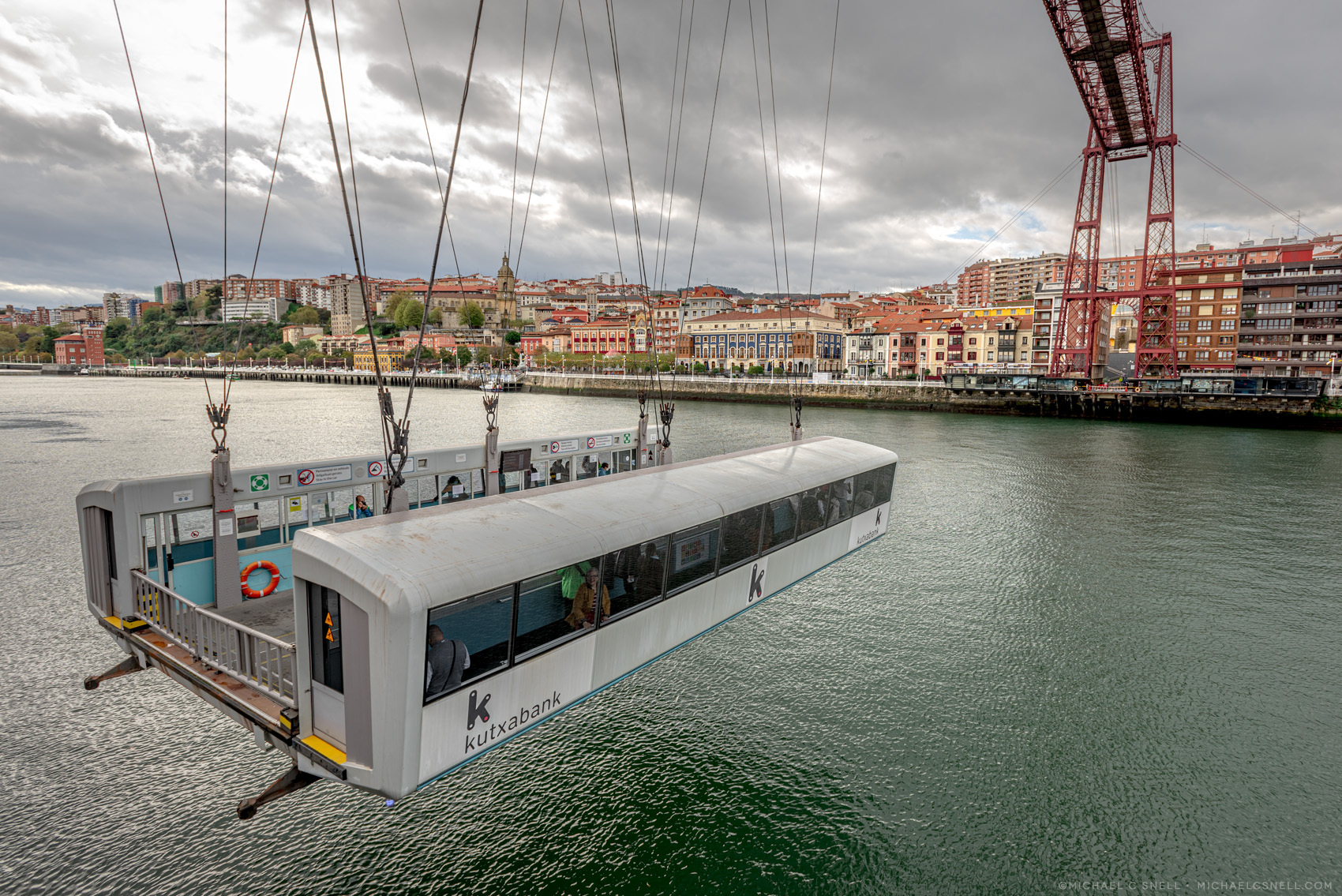
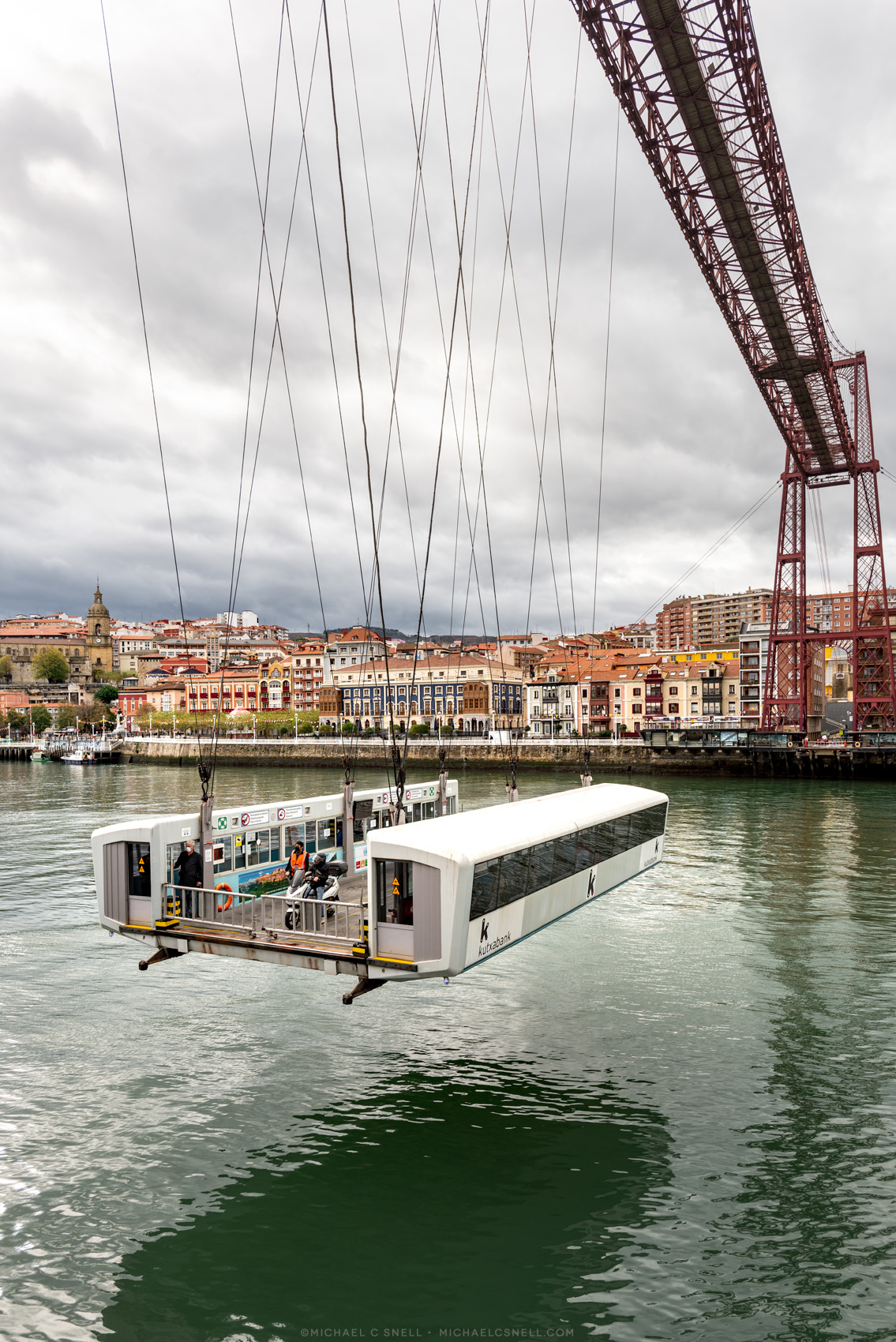
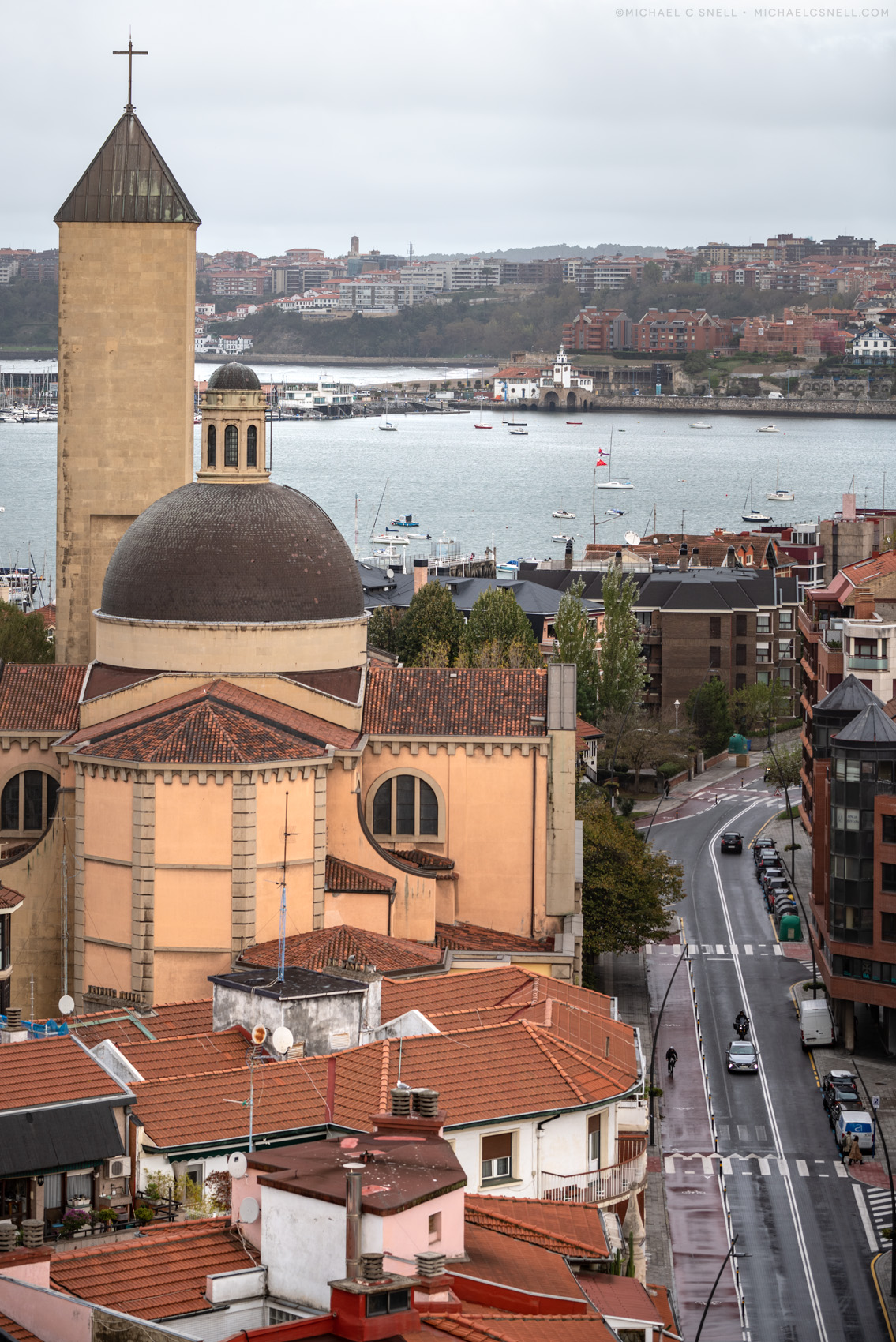

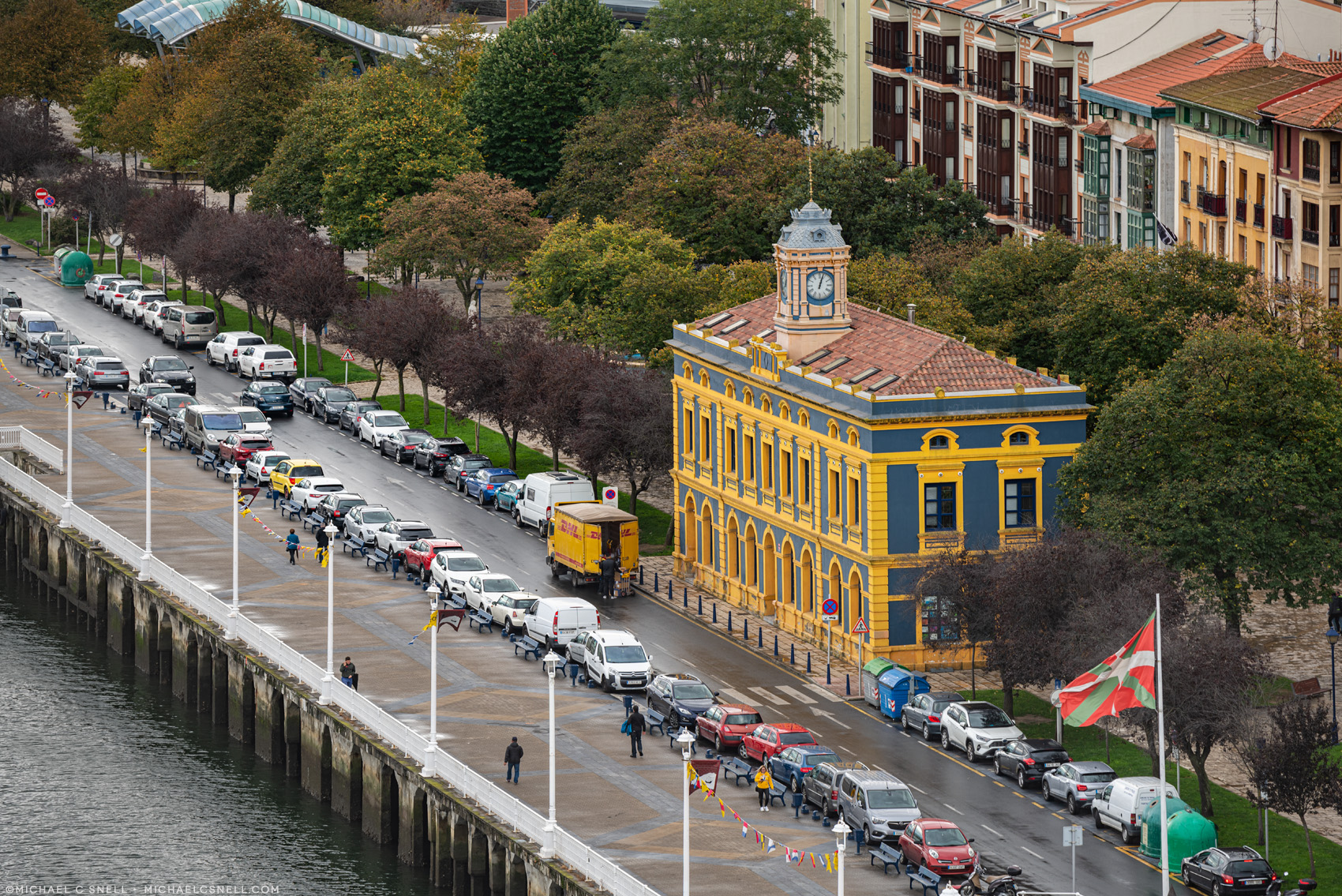
More from the UNESCO site: “It was the first bridge in the world to carry people and traffic on a high suspended gondola and was used as a model for many similar bridges in Europe, Africa and the America only a few of which survive.”
The bridge connects the communities of Getxo and Portugalete.
It’s a quick, fun ride across the river on the transporter, but photographers will enjoy the unique views that you get from taking the elevator up and walking across the elevated deck. You’re bound in by wire fencing, but the spacing is wide enough that you can get unobstructed shots through the mesh.
